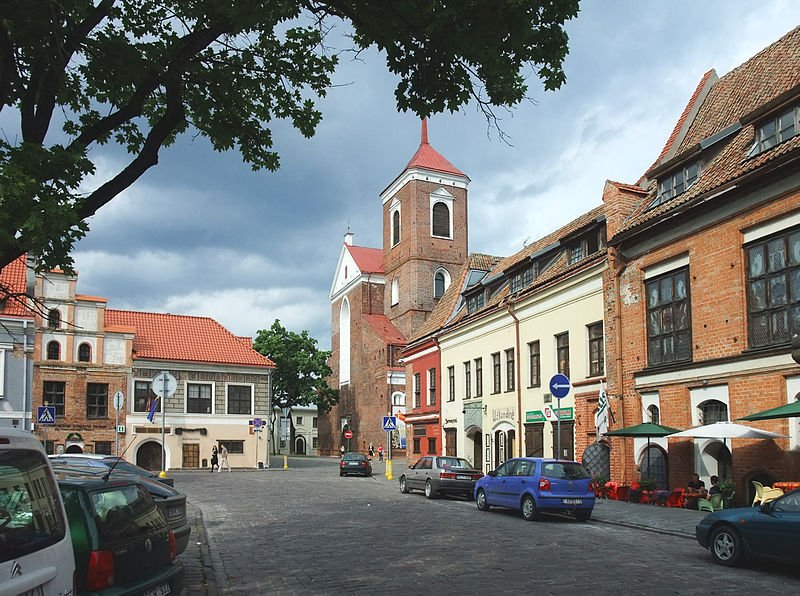 Kaunas, Lithuania
Kaunas, LithuaniaSource: https://commons.wikimedia.org/wiki/File:Kaunas-Peter_und_Paul_Kathedrale01.jpg
Author: Nikater

Kaunas, located in the central southern part of Lithuania, is the second most populous city in the country. It covers 157 sq km (60.6 sq mi) and has a population of 321,000 people (2011 estimate). Situated at the confluence of two major rivers namely the Nemunas and the Neris, Kaunas is historically one of the major economic, academic and cultural hubs of Lithuania.
Kaunas experiences a humid continental climate that is relatively mild for its latitude, due to proximity to the Baltic Sea. The warmest month in Kaunas is July, when the average high temperature rises to 22.2°C (72°F). Coldest month is January, when the average low temperature drops to -8.5°C (16.7°F). July is the wettest month, receiving 80 mm (3.15 in) of precipitation.
Archaeological excavations have provided evidence of human habitation in the area around Kaunas going back to the second millennium BC. The city itself traces its founding to the 11th century AD, specifically in AD 1030. The city joined the Hanseatic League in 1441. Kaunas was attacked by Russia a number of times in the 17th century. It was also occupied by Sweden in 1701. In addition, it also suffered from the Black Death in 1657 and 1708, and was damaged by major fires in 1731 and 1732.
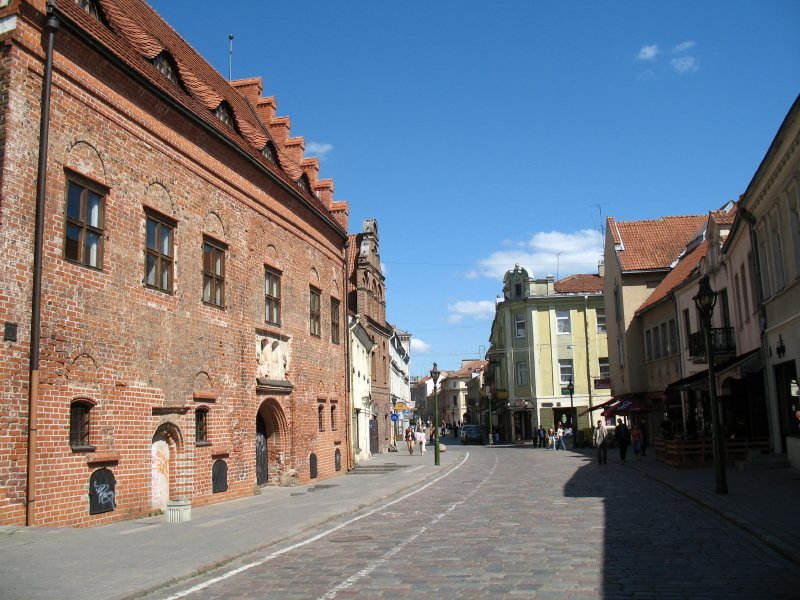 Downtown Kaunas
Downtown KaunasSource: https://commons.wikimedia.org/wiki/File:Kauno_senamiestis_2006-06-03.JPG
Author: Creative

Kaunas was part of the Polish-Lithuanian Commonwealth until 1795, when the commonwealth was partitioned, and Kaunas became part of the Russian Empire. Napoleon's troops advancing through Lithuania into Russia passed through Kaunas twice, and severely devastating it on both accounts.
Kaunas had a sizable Jewish community until the Second World War, when it succumbed to Nazi genocide. After the Second World War, Kaunas was once again under the Soviet regime - but not without a fight. The city was a major bastion of anti-Communist resistance, particularly in 1972, when 19-year-old Romas Kalanta immolated himself after denouncing Soviet suppression. His death fueled further unrest and self-immolation.
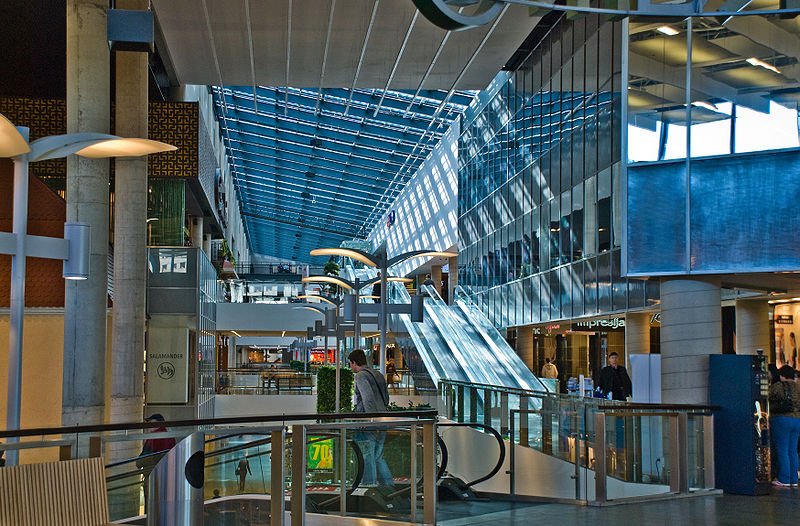 Akropolis Mall, Kaunas
Akropolis Mall, KaunasSource: https://commons.wikimedia.org/wiki/File:Akropolis_Mall,_Kaunas,_Lithuania,_12_Sept._2008.jpg
Author: Phillip Capper

When Lithuania regained its independence, Kaunas became the main industrial city of the country, producing a quarter of its industrial output. Today the city has vastly improved its environment standards as well as standard of living.
Visiting Kaunas
Kaunas International Airport (KUN) is served by low-cost carrier Ryanair from Birmingham, Bremen, Bristol, Dublin, Frankfurt-Hahn, Liverpool, London-Stansted and London-Luton. You can also take a train or bus from Vilnius to Kaunas.Places of Interest in the Old Town of Kaunas
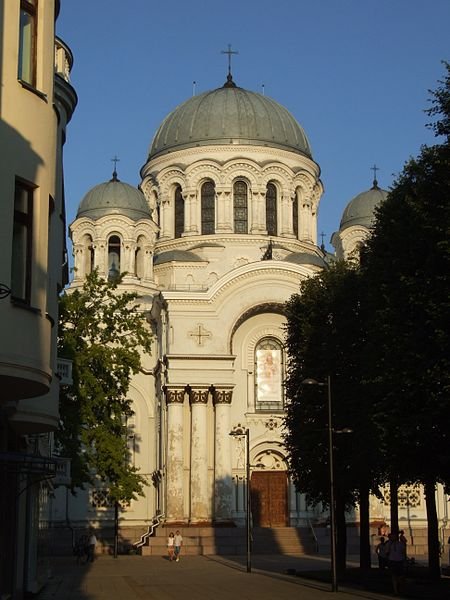 Church of St Michael the Archangel, Kaunas
Church of St Michael the Archangel, KaunasSource: https://commons.wikimedia.org/wiki/File:Church_of_Saint_Michael_the_Archangel,_Kaunas.JPG
Author: Pudelek

- Cathedral of Saints Peter and Paul
The main church in Kaunas dating from the 15th century. Its exterior was done in a blend of Gothic and Renaissance styles while the interior in the late Baroque style. - Church of St George
Church built for the Bernardine friars in the 15th century, it has an interior that was restored in the Baroque style. - Church of the Holy Trinity
Built in the 1620s for a Bernardine convent, the church is remarkably well preserved. It is a blend of Renaissance and Gothic architectural styles. - Folk Music Museum
Museum displaying all sorts of musical instruments. It has a collection of 7,000 pieces but only displays about 500 of them, due to its small size. - Kaunas Castle
Ruins of the castle that protected Kaunas during medieval times. It is located between the two rivers of the city. - Old Town Hall
Looking like a church, the Old Town Hall serves as the marriage registry office since the 1970s, providing newlyweds with a church-like backdrop. - Perkūnas House
This red-brick Gothic building that looks like a church is named after Perkūnas, the pagan god of thunder, as it may have been built on the site of a pagan temple. Built in the 15th century, it once served as a meeting house for merchants of the Hanseatic League. - Pharmacy Museum
Museum exhibiting strange concoctions and brews for healing from the past. Also on display are medical apparatus and wax figures. - Vytautas Church
Church on the banks of the Nemunas River built by Vytautas the Great. It was later converted into a Russian Orthodox church.
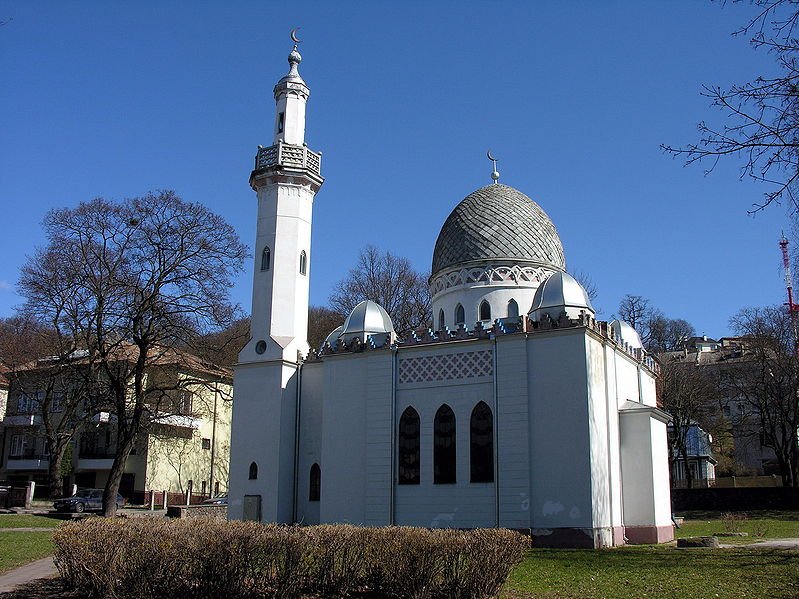 Kaunas Mosque
Kaunas MosqueSource: https://commons.wikimedia.org/wiki/File:Kauno_musulmonu_mecete1.2007-04-06.jpg
Author: Algirdas

Sights & Attractions in Modern Kaunas
- Church of the Resurrection
Church built to mark Lithuania's independence in 1918. It was turned into a radio factory by the Soviets during World War II. - Devil's Museum
Founded by avid collector Antanas Žmuidzinavičius, it exhibits items related to devils, demons and witches. - Laisvės Avenue
Important avenue in Kaunas with a number of sights including the Church of St Michael and the Monument to Romas Kalanta. - M K Čiurlionis Art Museum
Housing 335,000 pieces, it is the largest art gallery in Lithuania, although there is only space to show a small fraction of this. Almost all the paintings produced by Űiurlionis can be found here. - Mykolas Žilinskas Art Gallery
Art collection from a local-born who fled the city when the Soviets invaded, and later donated the art pieces to the city. - Ninth Fort
This is the 9th in a series of fortification built by Russia in the early 20th century to protect its western frontier. It was turned into a prison in 1924, and became a extermination camp used by the Nazis in World War II. - Pažaislis Monastery
The monastery and its cupola-domed Church of the Visitation of the Blessed Virgin Mary were built in the Baroque style by Italian architects in the 17th century. - Raudondvaris
Meaning "Red Manor", this red-brick structure dating to the 14th century was built by the Crusaders. - Rumšiškės Open-Air Museum
Museum showcasing traditional architecture such as thatched farmsteads and huts. It provides a glimpse into rural life in Lithuania. - Vytautas the Great War Museum
Named after the most famous ruler of medieval Lithuania, this is the country's national war museum. It displays weapons that Lithuania used to defend itself. - Zapyškis Church
This is a lovely Gothic-style church of red brick, built in the 16th century, in a field next to the Nemunas River.
 Latest updates on Penang Travel Tips
Latest updates on Penang Travel Tips
Songs about Penang
About this website

Hello and thanks for reading this page. My name is Timothy and my hobby is in describing places so that I can share the information with the general public. My website has become the go to site for a lot of people including students, teachers, journalists, etc. whenever they seek information on places, particularly those in Malaysia and Singapore. I have been doing this since 5 January 2003, for over twenty years already. You can read about me at Discover Timothy. By now I have compiled information on thousands of places, mostly in Peninsular Malaysia and Singapore, and I continue to add more almost every day. My goal is to describe every street in every town in Malaysia and Singapore.
Copyright © 2003-2024 Timothy Tye. All Rights Reserved.


 Go Back
Go Back